This blog is part of a series related to Gov 1372: Political Psychology, a course at Harvard University taught by Professor Ryan D. Enos.
This week I’ll be exploring the role that gender and other variables have on which types of countries are more likely to initiate conflicts with other countries. The data is modified from Barnhart et al. (2020) which found evidence that women’s suffrage plays an important role in democratic peace. In this blog post, we’ll explore modified data from Barnhart et al. (2020) and plotting the same trends to replicate the findings. We’ll all explore models and interaction effects in models.
Background
Barnhart et al. (2020) found evidence that women’s suffrage plays an important role in democratic peace. In summary, countries with women’s suffrage on average initiated fewer conflicts with other countries that did not have women’s suffrage.
The Data
The data is modified from Barnhart et al. (2020) and some of the key variables that I look in this blog post are init, autocracy, suffrage, and polity. init stands for initiate and it contains the total number of conflicts initiate by a total of 157 countries tracked in the dataset from 1900 to 2007. autocracy is coded as a 1 if a state’s Polity score is 5 or lower. Otherwise, it is coded a 0. suffrage is coded to determine which countries during which years have women’s suffrage. It is determined if any women are able to vote in national elections and if a nation’s polity score is above 1. This bring us to the third variable, suffrage, which is on a scale of -10 to 10 where the lowest score represents a hereditary monarchy and the highest score represents a consolidated democracy. You can learn more about polity scores here.
To start, I plot the distribution of the number of conflicts initiated by countries in this data from 1900 to 2007.
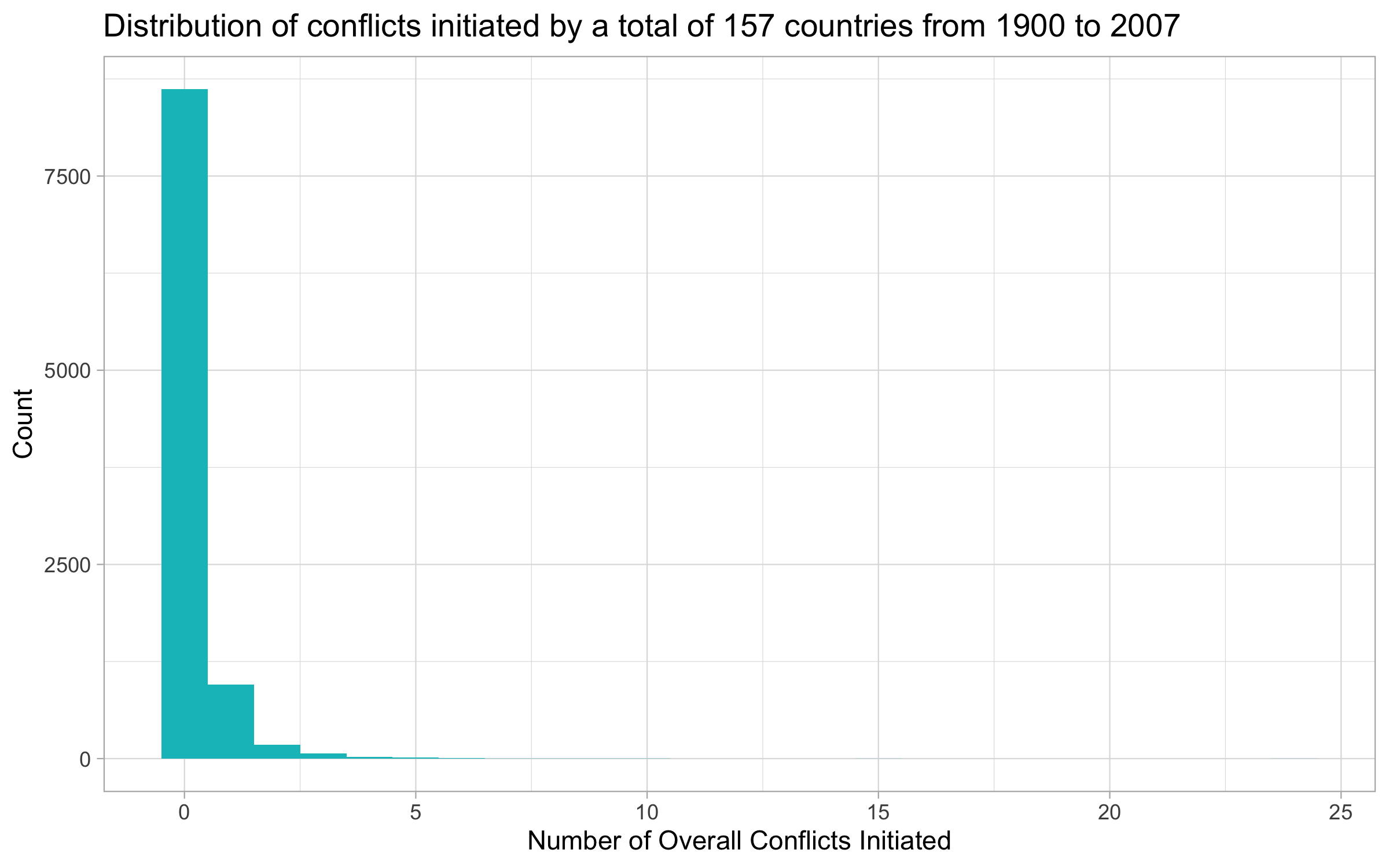
From this plot, we can see that the most common number of conflicts initiated is 0 and that the data is heavily right-skewed. This aligns with the results I was expecting because most countries are not constantly initialing conflicts with other nations every year (that would be concerning). So, the frequency of initiating conflict is fairly low. Next, I calcuated the total difference in the number of conflicts inititated by democracies compared to autocracies and ploted the difference over time.

Based on the this plot, we can see that the data does suggest that democracies initiate fewer conflicts on average than autocracies. This can also be confirmed with a t-test showing that this difference is statistically significant at the 95% confidence level. Democracies on average initiate between 0.03 and 0.08 fewer conflicts than autocracies at the 95% confidence level. Code for the t-test can be found in the code for this blog post on GitHub.
Next, I take a look at the suffrage variable, the main variable of interest in Barnhart et al. (2020).
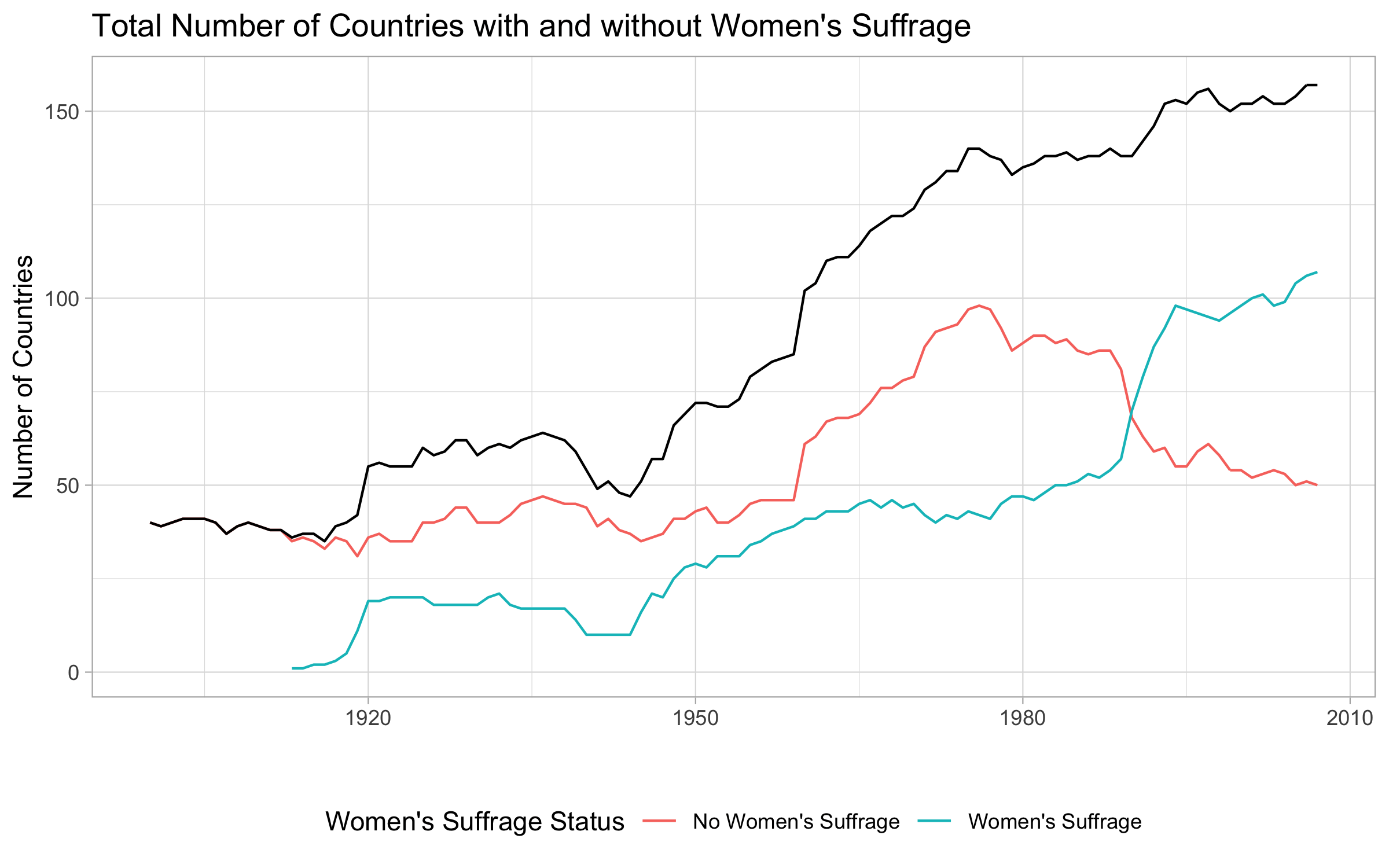
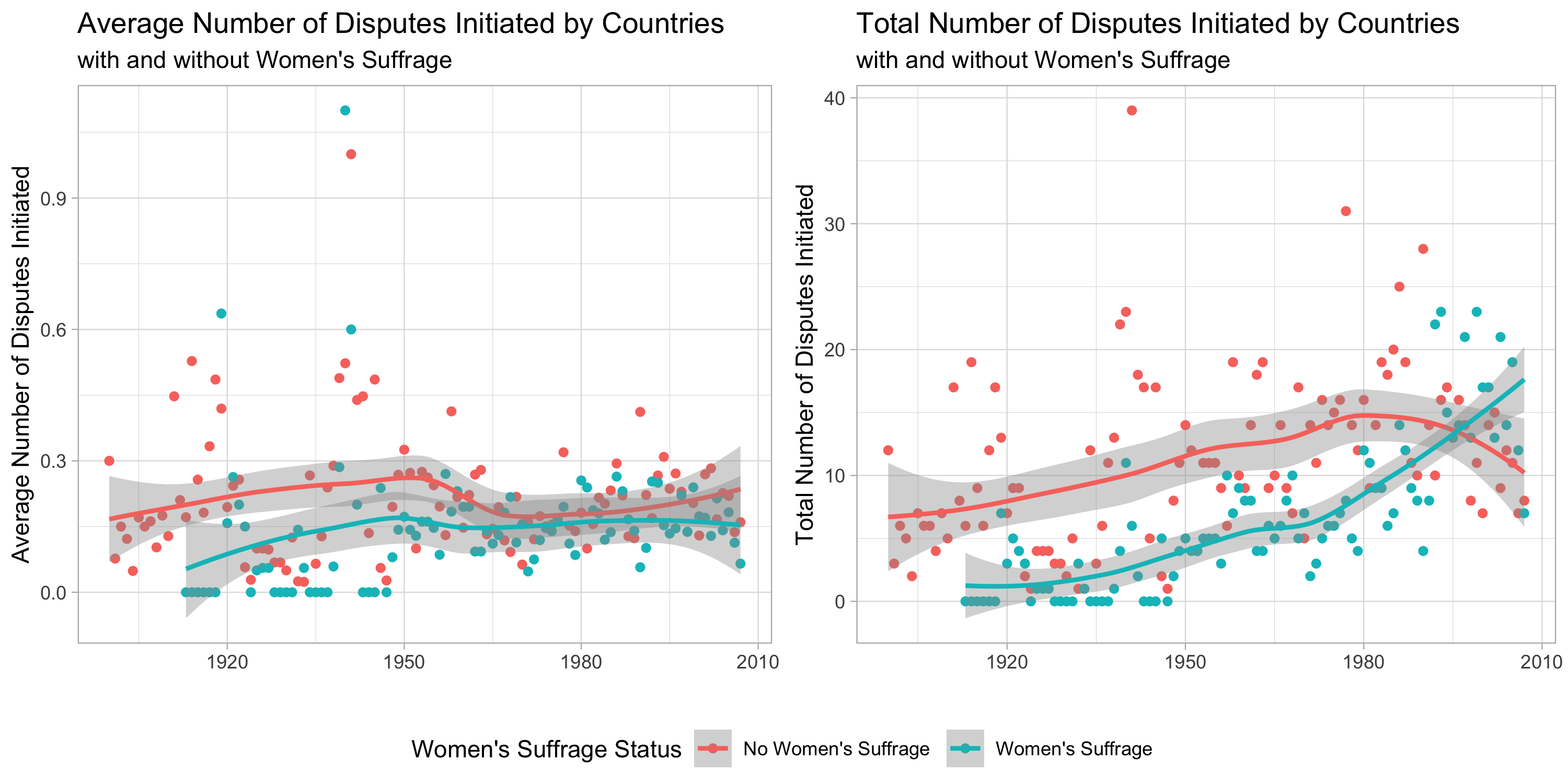
The first question was the trend of how many countries have established women’s suffrage over time. In the first plot, we can see this trend alongside the total number of countries measured in the dataset per year. We can see that there are more countries without women’s suffrage until the 1990s. Then, there is a switch where more countries have women’s suffrage. We can see how this shift impacts the total number of conflicts initiated by these two groups of countries in the second plot.
From the two graphs in the second plot, we can see two unique time-series trends related to the average and total number of disputes initiated by countries with and without women’s suffrage. The first trend looking at the average number of disputes shows that countries without women’s suffrage have on average always initiated more conflicts than countries with women’s suffrage since 1900.
The second trend looking at the total number of disputes shows that countries without women’s suffrage have on average initiated more conflicts than countries with women’s suffrage up to the late 1990s. Then, there was a switch and countries with women’s suffrage started having on average initiated more conflicts than countries without women’s suffrage. This occurs at the same time that there was a switch where more countries have women’s suffrage as I noted before. So, we can see that this shift in the late 1990s was likely due to more countries gaining women’s suffrage.
Models
In the next part, I explored OLS models looking at polity score and women’s suffrage.
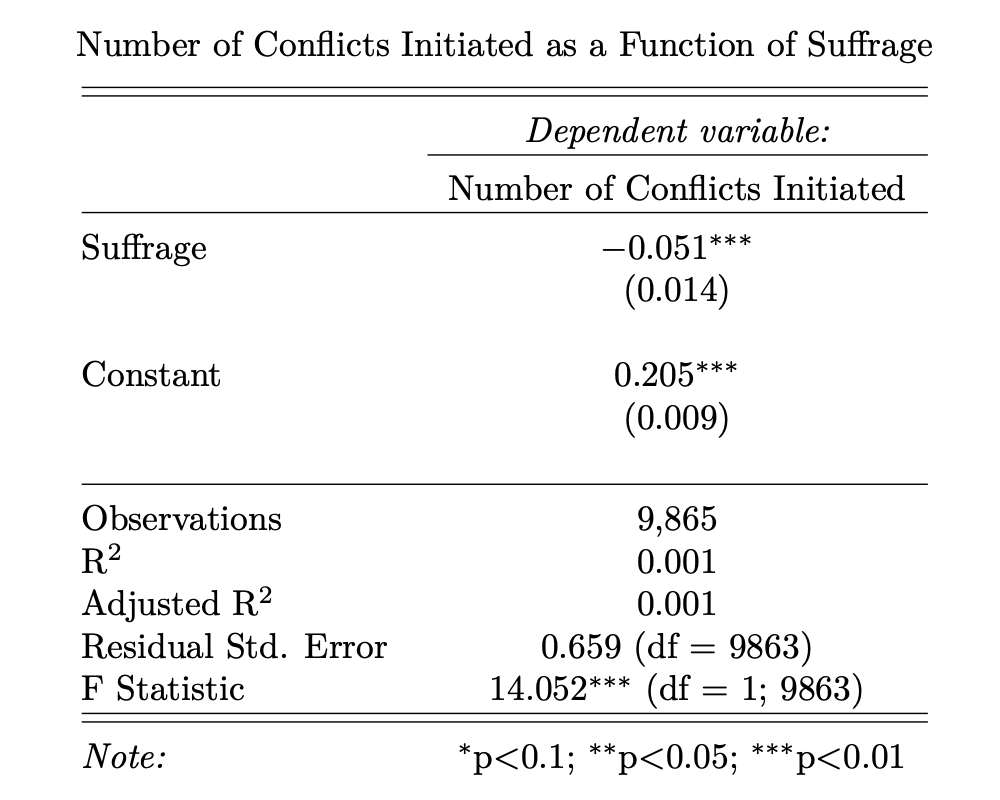
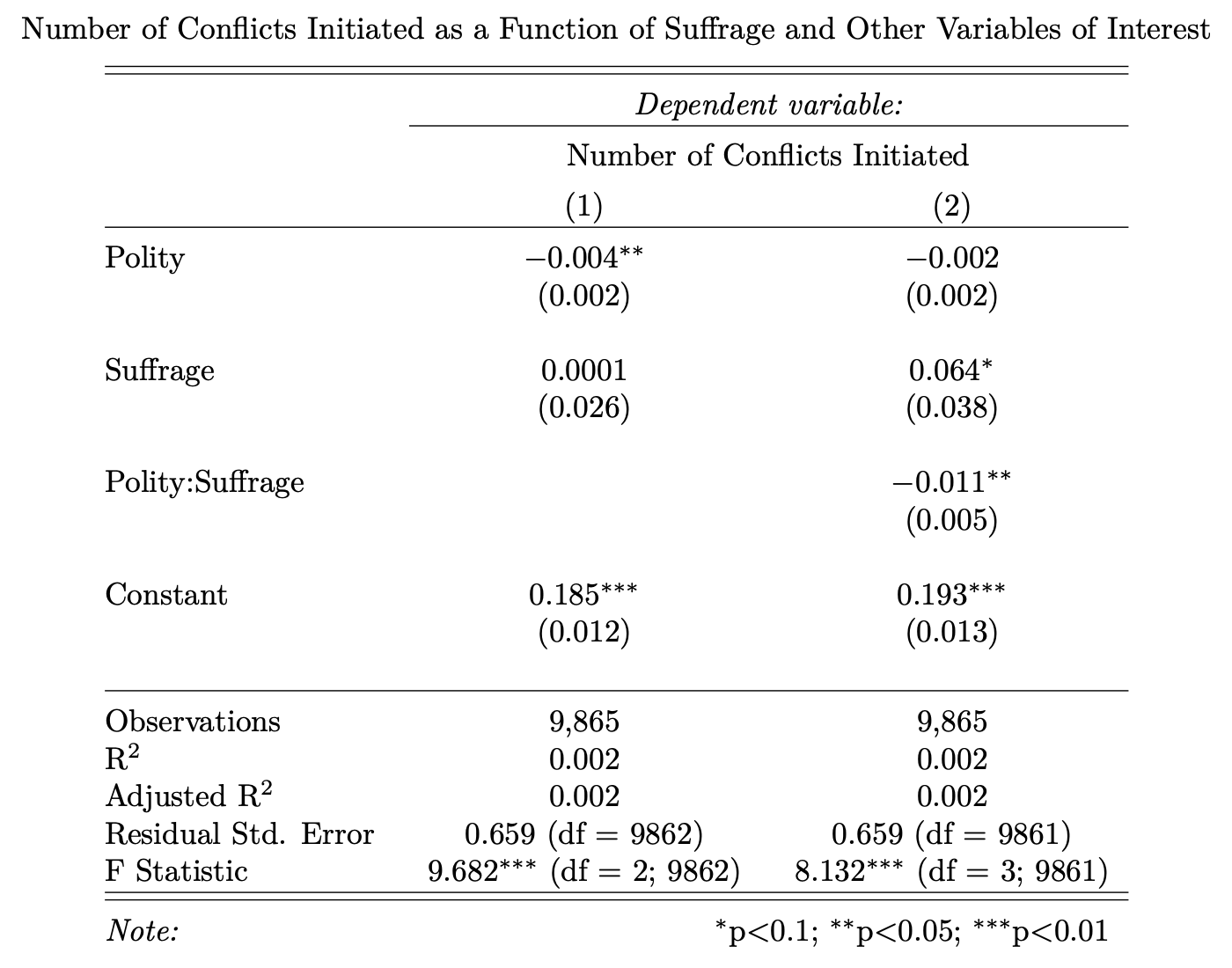
My first model just explores the relationship between suffrage and init. From the regression model, we can see that countries with women’s suffrage on average initiation on average 0.05 fewer conflicts than countries without women’s suffrage. This finding is statistically significant with a p-value of about 0.002 and a confidence interval of -0.077 and -0.024.
In the second model, I add in polity and then the interaction of polity with suffrage to measure init. Comparing these two models, we can see that without considering the interaction between polity score and women’s suffrage, an increase in polity score by 1 (more democratic) is associated on average with a decrease in the number of conflicts initiated by about 0.004. However, a country with women’s suffrage is associated on average with an increase in the number of conflicts initiated by about 0.0001.
However, by considering the interaction between polity score and women’s suffrage, we see a big shift in that a country with women’s suffrage is associated on average with an increase in the number of conflicts initiated by about 0.064. However, an increase in polity score by 1 in a country with women’s suffrage will be associated with on average a decrease in the number of conflicts initiated by about 0.011 compared to an increase in polity score by 1 in a country without women’s suffrage. This makes sense as a higher polity score (up to 10) makes a country more democratic and these countries tend to mostly all have women’s suffrage.
To fully see the effect of the interaction, I plot predicted init values based on polity score using the model with the interaction:
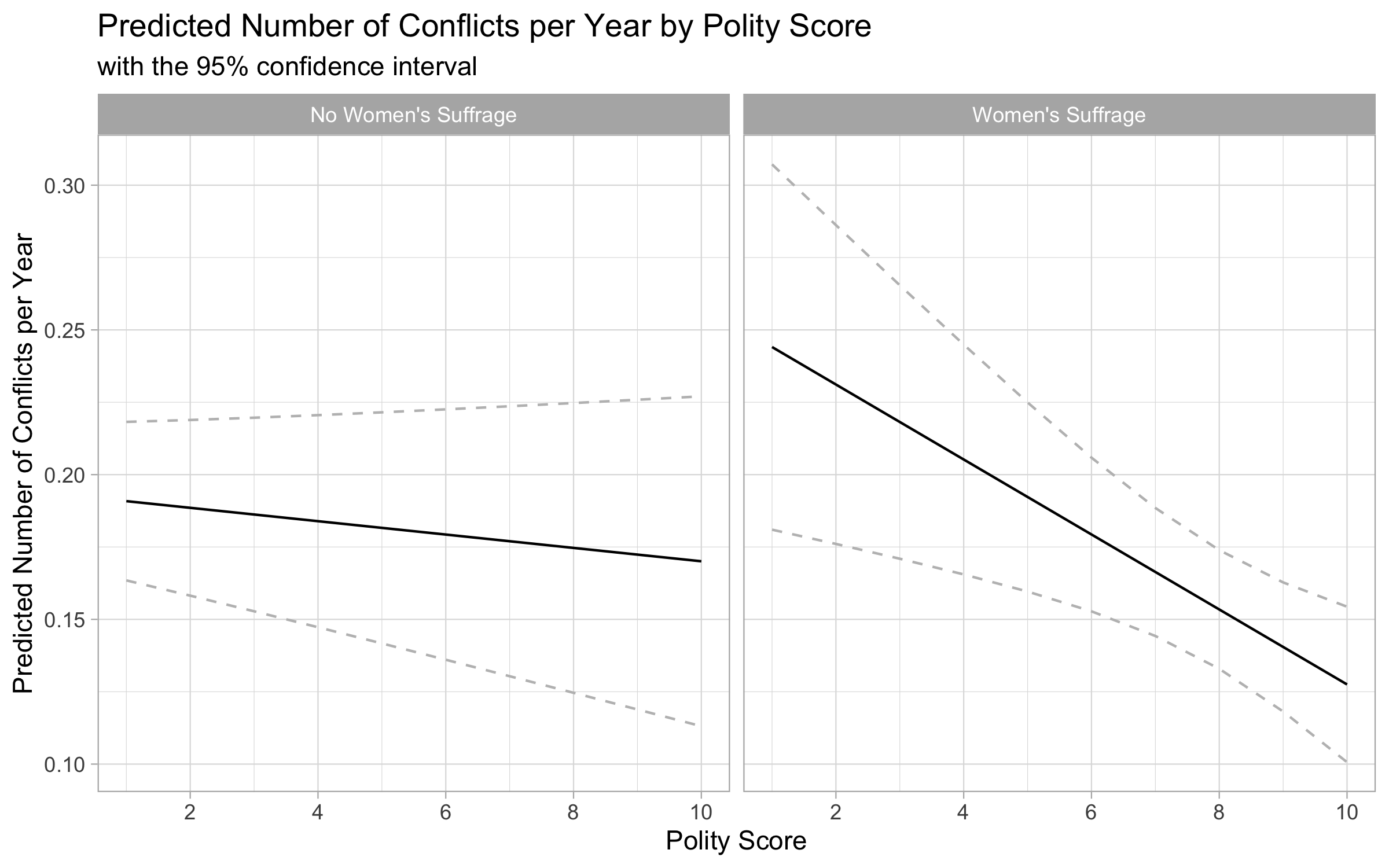
In the plot, we can see that as polity score increases, countries with women’s suffrage tend to have much lower predicted number of conflicts on average than countries without women’s suffrage. This visualizes the importance of the interaction variable in the model.
Conclusion
I was able to explore a modified version of the data in Barnhart et al. (2020). The trends I saw were similar to the main findings that countries with women’s suffrage on average initiated fewer conflicts than countries without women’s suffrage. However, one concern I have with this findings is that the number of countries being tracked throughout the 1900s and into the early 2000s was not consistent. Throughout the years, more countries were added to the data and it appears that some were removed from the data at some years. This makes me question how accurate the models really are given this fluctuation.
